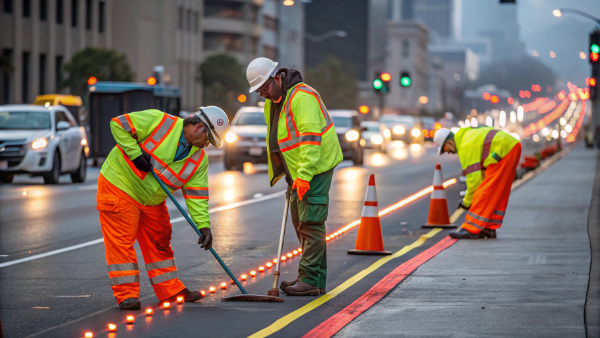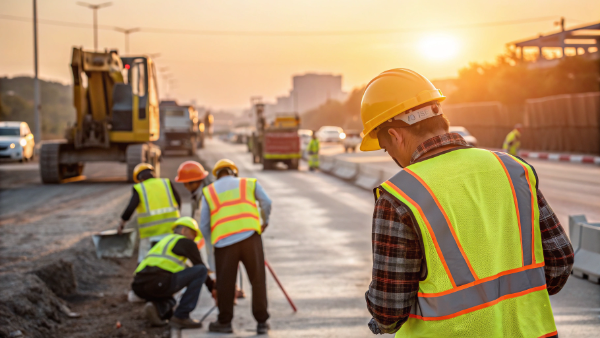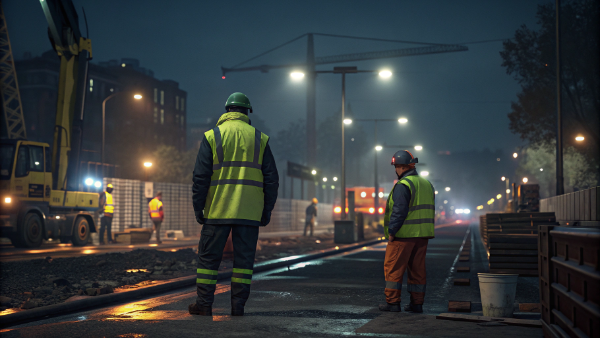Tired of hi-vis shirts fading and falling apart? This costs you money and risks your team's safety. I can help you find shirts that last.
The most durable hi-vis shirts come from manufacturers that control the entire production process. At Vissafety, we use high-grade, colorfast fabrics and reinforced stitching. We also offer advanced cooling materials that withstand harsh conditions while meeting ANSI/ISEA 107 standards for long-lasting compliance.

Finding a shirt that holds up is just the start. You also need to understand what makes a shirt truly effective and compliant. These details are important for anyone who buys safety apparel in bulk. Let's break down the key factors you need to consider before placing your next order. Getting these details right will protect your workers and your business.
Who makes the best Hi-Vis workwear?
Choosing a supplier feels like a gamble. A bad choice means poor quality and delays. The right partner can elevate your brand and ensure safety on site.
The "best" workwear manufacturer is one that acts as a true partner. They offer quality guarantees1, deep customization, and a reliable supply chain. We built Vissafety on these principles, focusing on B2B clients who need more than just a product; they need a production solution.
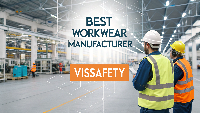
I believe the best manufacturer is one you can trust completely. It’s not just about the product; it’s about the partnership. A long-term partner of mine, Danny Cheng from California, once told me about a \$500,000 loss he suffered from a different supplier. The issue was a simple batch color inconsistency. Since we started working together in 2012, our triple-check quality control has ensured he's never faced that problem with us. This is what a true manufacturing partner does. We provide detailed inspection reports and hold certifications like ISO and OEKO-TEX, so our clients know every batch meets global standards. This focus on reliability is why clients like Danny stick with us for over a decade. It's about delivering consistency you can build your business on. The best workwear comes from a source that protects your reputation as much as it protects workers.
| Vissafety Advantage | How It Helps Our B2B Partners |
|---|---|
| Triple Inspection QC | Prevents costly defects and recalls, ensuring product consistency. |
| In-House R&D Lab | Allows for rapid prototyping and innovative, compliant designs. |
| Full Customization | Strengthens your brand with unique styles, logos, and materials. |
| Global Certifications | Guarantees products meet standards like ANSI, ISO, and OEKO-TEX. |
What is the difference between Class 2 and Class 3 Hi Vis shirts?
Picking the wrong safety class can lead to non-compliance. This puts workers at risk and can result in fines. Let me clarify the key differences for you.
The main difference is the amount of reflective and fluorescent material required. Class 3 garments have more of both and include reflective material2 on the sleeves. This offers much greater visibility for workers in high-risk environments who must be seen from all angles.
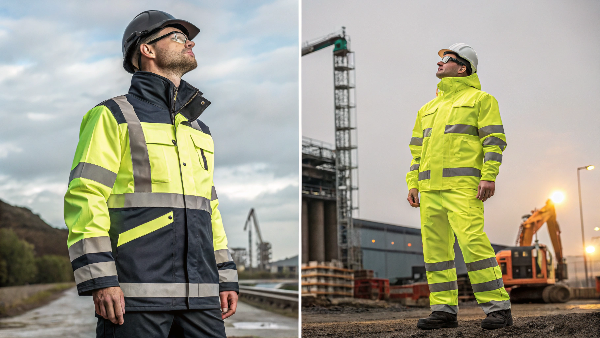
Understanding the classes is critical for my clients. They need to supply the right gear for the job. Class 2 is for workers in areas where traffic is moving under 50 mph. Think of roadway construction crews or utility workers. The gear provides good 360-degree visibility. Class 3 is for workers in the most dangerous conditions. This includes highway crews where traffic exceeds 50 mph, or people working at night in very low light. The extra material on the sleeves is what makes a huge difference. It helps drivers recognize a person's shape from far away. For example, my partner Danny Cheng needed a unique Class 3 jacket for workers in hot climates. We co-developed a lightweight, breathable model that met ANSI/ISEA 107 Class 33 standards without making workers uncomfortable. Our in-house lab, with over 75 testing devices, ensures every custom design is fully compliant before production.
| Feature | ANSI/ISEA 107 Class 2 | ANSI/ISEA 107 Class 3 |
|---|---|---|
| Background Material | Minimum 775 in² | Minimum 1240 in² |
| Reflective Material | Minimum 201 in² | Minimum 310 in² |
| Sleeve Requirement | Sleeves are not required. | Must have reflective material on sleeves. |
| Typical Use Case | Road workers, airport ground crews. | Highway workers, emergency responders. |
Does OSHA require hi vis clothing?
Unsure about OSHA's rules for high visibility? This confusion can lead to workplace accidents and serious penalties. I'll give you a clear, simple answer.
Yes, OSHA requires hi-vis clothing4 in specific situations. The regulation states that employees exposed to vehicle traffic must wear it. It also points to the ANSI/ISEA 1075 standard as the way to comply, so choosing certified garments is essential for meeting OSHA rules.

OSHA is focused on preventing "struck-by" accidents, which are a leading cause of death in construction. Their rule is designed to make workers visible to vehicle and equipment operators. While OSHA sets the requirement, the ANSI/ISEA 107 standard provides the specific instructions on how to meet it. This is where we come in as a manufacturer. Our job is to make compliance simple for our B2B clients. Every hi-vis shirt, vest, and jacket we produce is designed to meet or exceed the latest ANSI standards. We handle the technical side, from fabric testing to the exact placement of reflective tape. This means our clients can be confident that the apparel they provide will pass any OSHA inspection. It removes the guesswork and risk from their supply chain. It's about giving business owners peace of mind, which is a major priority for them.
| Job Role | Common Environment | Likely ANSI/ISEA 107 Class |
|---|---|---|
| Parking Attendant | Low-speed traffic, daytime | Class 1 or Class 2 |
| Road Construction Worker | Traffic < 50 mph | Class 2 |
| Utility Worker | Near moving traffic | Class 2 or Class 3 |
| Highway Worker | Traffic > 50 mph, complex backgrounds | Class 3 |
| Emergency Responder | Night, poor weather, high-speed traffic | Class 3 |
How often should you replace hi vis clothing?
Faded, torn hi-vis clothing is a safety hazard. But replacing it too often is expensive. Knowing the right replacement cycle saves money and keeps workers safe.
There is no fixed rule, but a general guideline is to replace hi-vis clothing every six months if worn daily. You must replace it immediately if it is torn, soiled, or faded. The garment's fluorescent and reflective properties degrade with use.
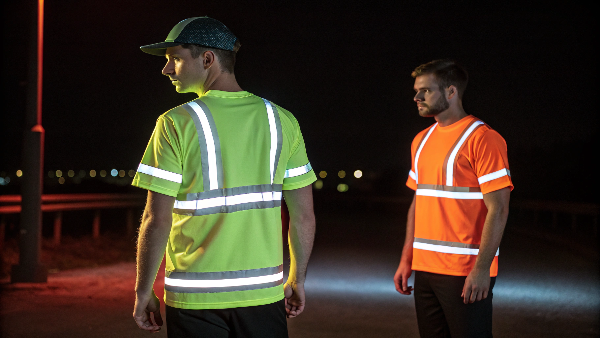
I always tell my partners to train their teams on how to inspect their own gear. A shirt’s lifespan depends on many things. These include the frequency of use, the work environment, and how often it is washed. A worker in a dirty, high-sunlight environment will need a new shirt sooner than someone working indoors. The key is visual inspection. A shirt is no longer effective when the bright background color looks dull or the reflective tape is cracked or peeling. We use high-quality dyes and durable reflective tapes to make our garments last as long as possible. Still, no shirt lasts forever. A good replacement policy is part of a strong safety culture. We even offer customizable care labels to help end-users wash their garments correctly. This helps extend the useful life of the apparel and gives our clients the best value.
| Inspection Checklist | Pass | Fail (Replace Immediately) |
|---|---|---|
| Color | Bright and fluorescent. | Faded, dull, or dirty. |
| Reflective Tape | Intact, clean, and highly reflective. | Cracked, peeling, or missing sections. |
| Fabric Integrity | No rips, tears, or holes. | Fabric is torn or has holes. |
| Cleanliness | Clean or can be washed clean. | Permanent stains that cover fluorescent or reflective areas. |
Conclusion
Choosing durable, compliant hi-vis shirts from a reliable manufacturing partner protects your workers and your business. We are here to help you get it right every time.
-
Understanding quality guarantees can help you choose a reliable workwear supplier, ensuring safety and satisfaction. ↩
-
Explore this link to understand the importance of reflective material in safety gear, ensuring maximum visibility and compliance. ↩
-
Learn about ANSI/ISEA 107 Class 3 standards to ensure your safety gear meets the highest visibility requirements for hazardous environments. ↩
-
Exploring the importance of hi-vis clothing can help you understand its role in preventing workplace accidents and ensuring safety. ↩
-
Understanding the ANSI/ISEA 107 standard is crucial for compliance with OSHA regulations and ensuring worker safety. ↩

